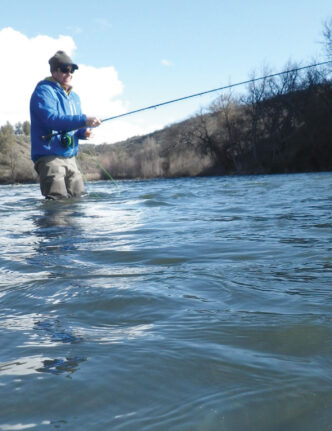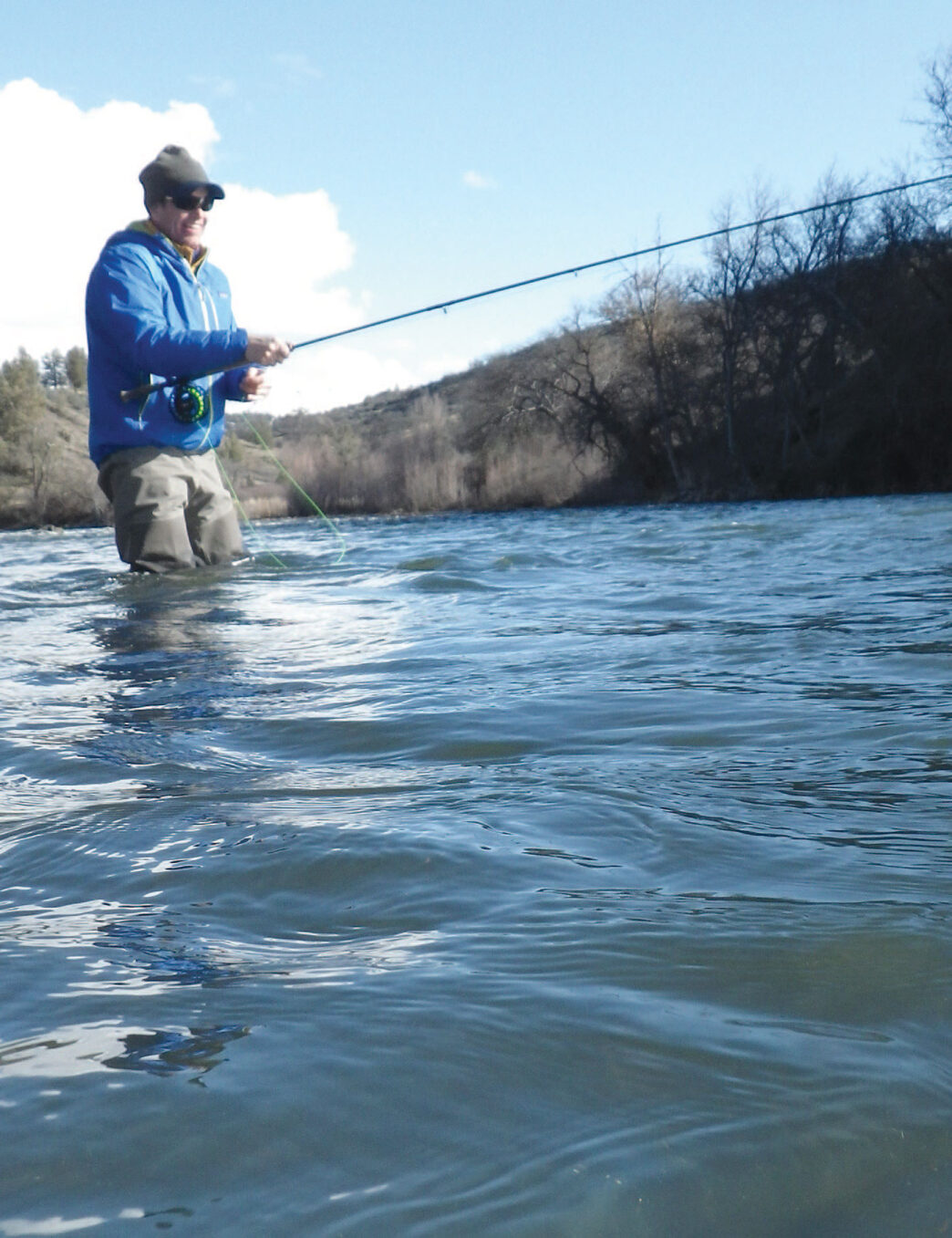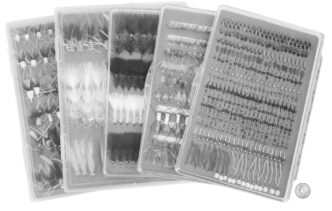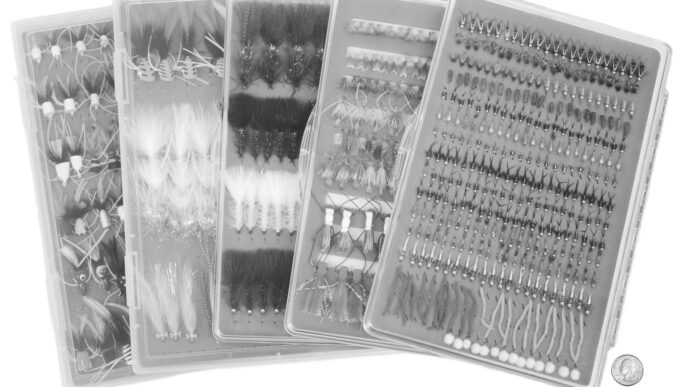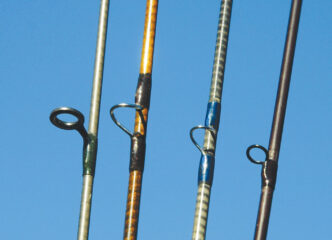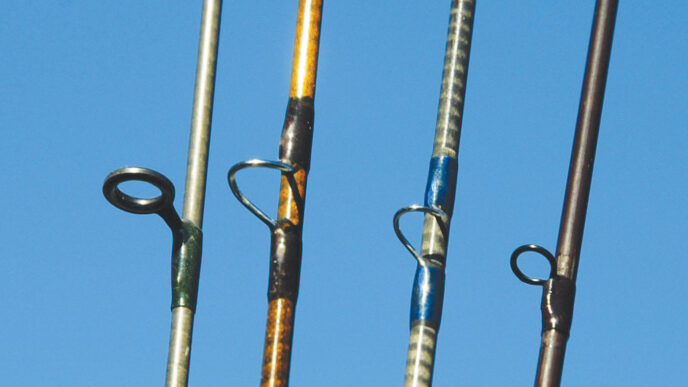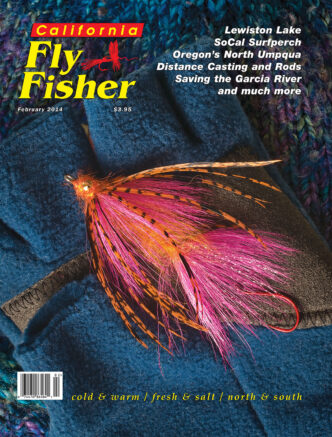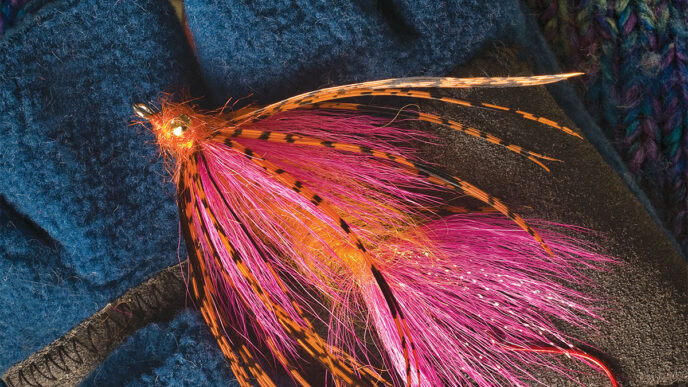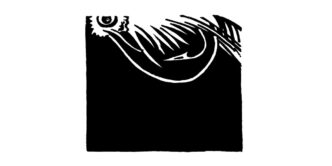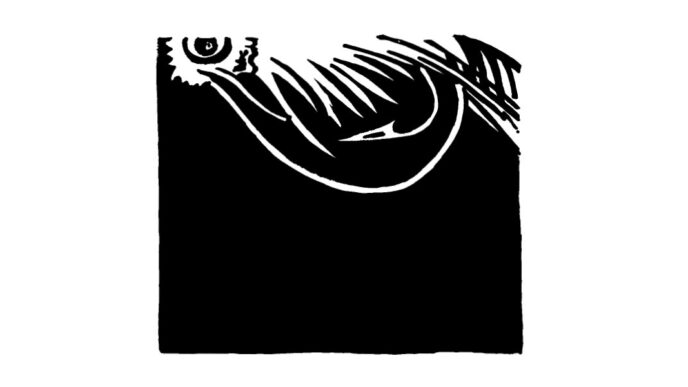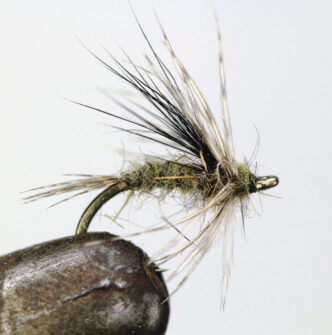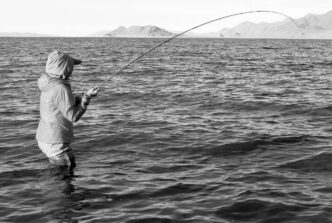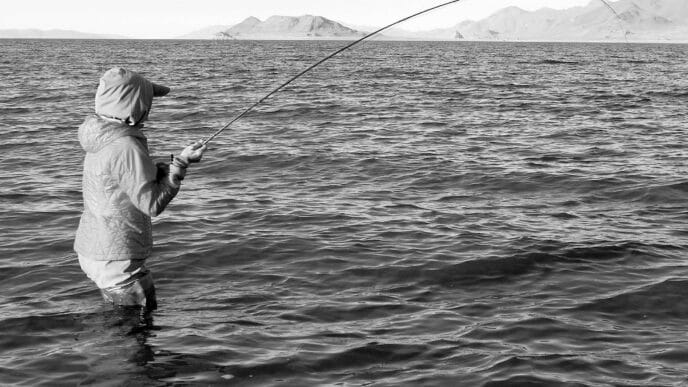While i was a freshman at Chico State in 1971, I saw a poster in the student union advertising a slide show about climbing. I thought it might be interesting, so I attended the event. The presenter had just completed an ascent of Half Dome in Yosemite, and the slides he shared had me spellbound, so I asked the speaker how I might get started in the sport. Were there any clubs or schools nearby where I could
learn? He said he knew of no schools or clubs, but it was really quite simple. I should just buy a rope and go. So despite the obvious peril, I took his advice, and climbing became my principal passion for over 20 years, culminating in my own ascents of Half Dome and El Capitan.
If you have the time and intention, learning to fish with a two-handed rod can be just that simple. It is how I learned to make my first casts back when there was little information about this aspect of the sport. But while learning on your own can be very rewarding, it is not without its frustrations and pitfalls. And in the years since I got started fishing two-handed rods, it’s become a lot easier to find information and instruction. Many fly shops now offer advice about equipment, casting instructors offer lessons on casting twohanded rods, as do some fishing clubs, and the number of books, DVDs, and on-line tutorials grows constantly. You also can learn a lot from a knowledgeable guide on a guided fishing trip.
If you’re just getting started fishing two-handed rods these days, all these resources can help. But at the same time, when you are first getting started, it’s hard to know what you don’t know, but probably could or should know. Here are some things to keep in mind that will allow you to intelligently and efficiently learn how to fish with a two-handed rod.
Fly Shops
One of the easiest places you can likely find some help is from a fly shop, particularly if you are interested in purchasing a rod, reel, and line. But while Spey and switch rod casting is one of the fastest growing facets of the sport, some shops are a bit behind the curve when it comes to talking the talk and walking the walk. At a minimum, you should try to find a salesperson who is an avid two-handed caster and who is familiar enough with the water you intend to fish to make good recommendations about the gear you’ll need. If you can’t find one locally, you may be best served by seeking out one of the shops that specialize in Spey and switch rods.
Before you make a purchase, it is best to pick gear that is suited for where you plan to fish frequently. The majority of fly fishers these days start their Spey casting journey with a 12-to-13-foot 6-weight or 7-weight rod and purchase a reel capable of holding 100 or more yards of backing and a running line to which they attach either a Scandinavian (Scandi) or a Skagit shooting head. The Scandi is lighter and longer than the Skagit and is used primarily for swinging smaller flies on or near the surface or sunk just a few feet. The Scandi is also most often employed to learn and practice casting.
The Skagit line is short and fat, and is used primarily to swing big flies sunk deeply. Both the Scandi and Skagit lines should have loop-to-loop connections on each end to attach to your running line and leaders or sink tips. The good news is that you will need only one reel and spool because of this interchangeability. If you have a saltwater reel in the 10-weight range, it will in most cases have the capacity and performance you’ll need.
Another option that many folks opt for is to transition from single-handed casting via switch rods. Switch rods are shorter, generally 11 feet to just under 12 feet in length, and are lighter, so they can be cast with one or both hands. They are also more versatile, because they are easy to use in overhead casting applications and for nymphing, particularly if you are adept at these techniques already. This is the path I took back in the 1980s after I suffered a shoulder injury from climbing and wasn’t able to double haul a single-handed rod for steelhead and shad all day. Adding the bottom hand to grip the rod also allowed me to cast distances I had never imagined reaching with a single-handed rod.
I still employ switch rods for about half of my steelhead fishing and all of my shad fishing. This is because most of the steelhead rivers I fish in Northern Califor-nia and Oregon are relatively small, and the long casts that 12-foot or 13-foot rods



